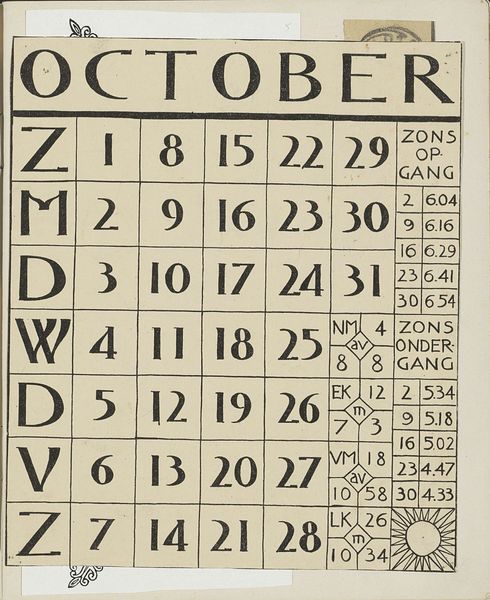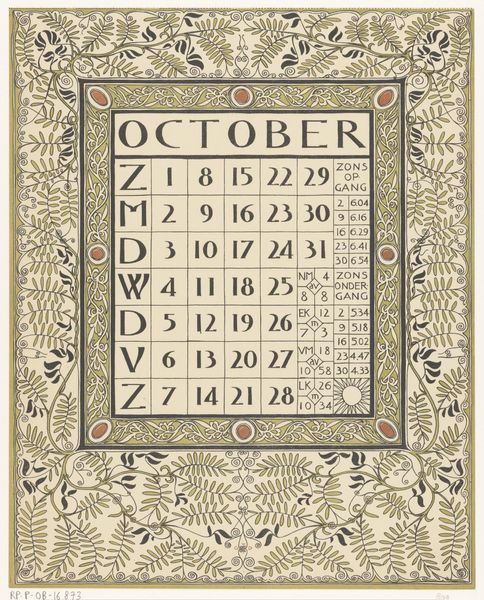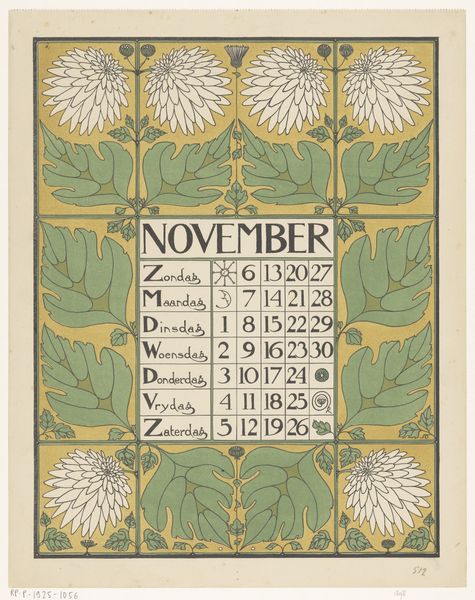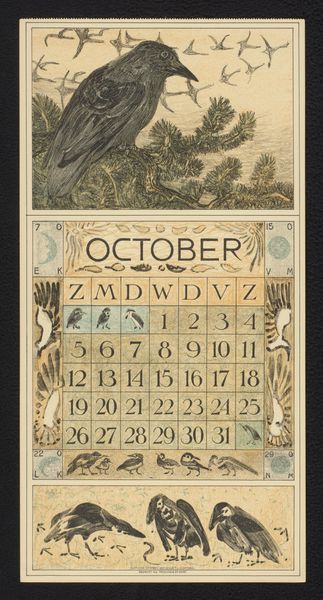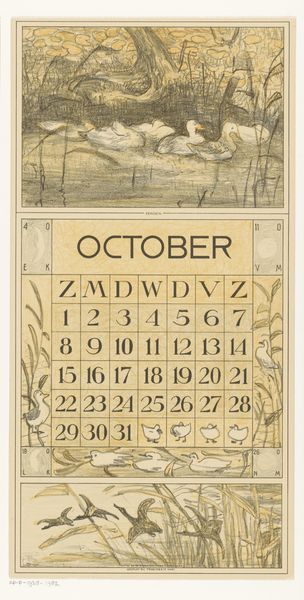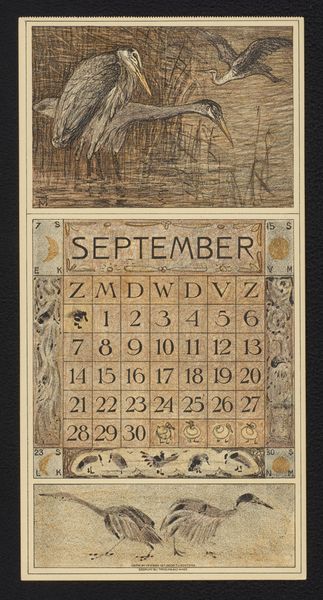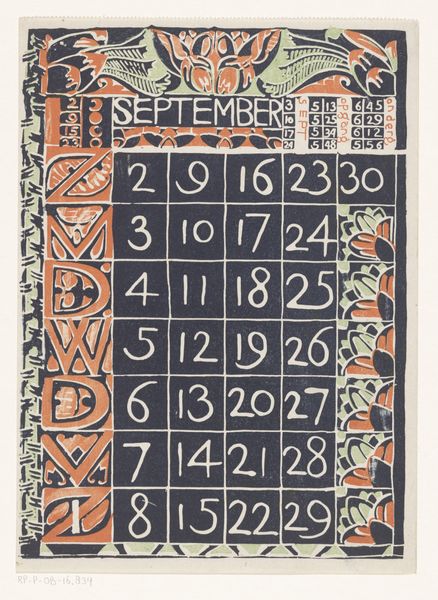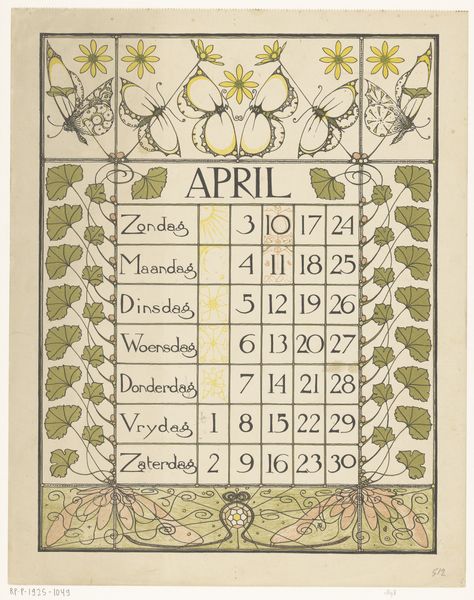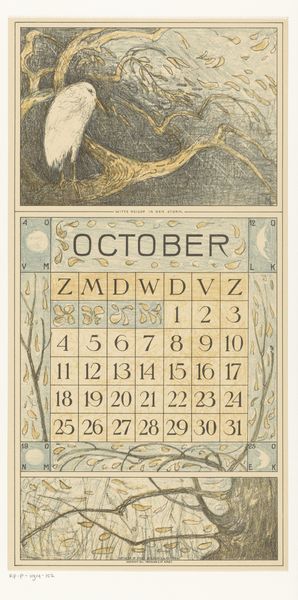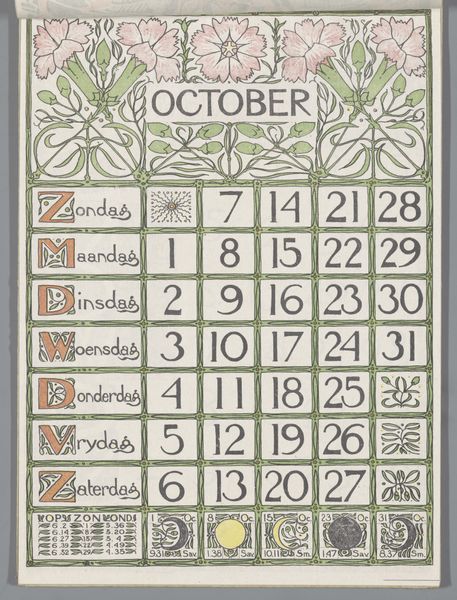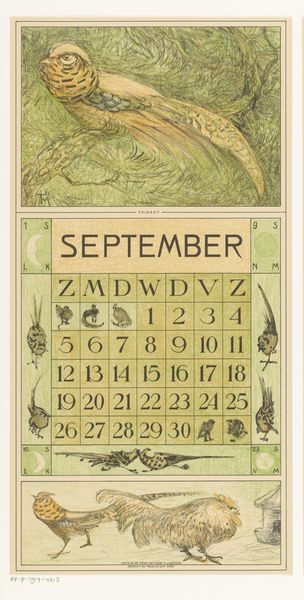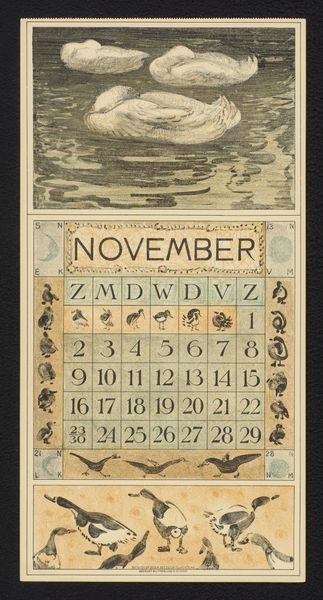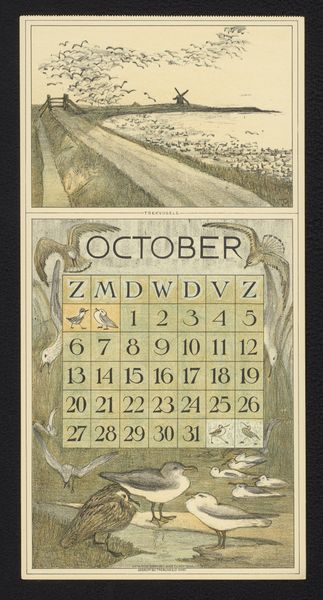
graphic-art, mixed-media, print, poster
#
graphic-art
#
aged paper
#
mixed-media
#
toned paper
#
art-nouveau
#
muted colour palette
# print
#
geometric
#
decorative-art
#
poster
Dimensions: height 375 mm, width 241 mm
Copyright: Rijks Museum: Open Domain
Editor: So, this is "Kalenderblad voor oktober 1896," a mixed-media print from 1895 by Theo Nieuwenhuis, housed in the Rijksmuseum. I’m struck by the almost austere beauty of it. It's a calendar, yet it feels more like a decorative object. The muted blues and greens create this serene atmosphere, almost like looking at a faded tapestry. What catches your eye about it? Curator: It's fascinating how Nieuwenhuis transforms something as functional as a calendar into a work of art reflecting the burgeoning Art Nouveau movement. It wasn't merely about decoration, but elevating everyday life. These decorative arts calendars weren't just practical, but became statements of refined taste in a period undergoing significant industrial and social changes. Do you notice the grape motif? Editor: Yes, the bunches of grapes. Are they symbolic of something in particular? Curator: Absolutely. The grape imagery speaks to abundance, harvest, and perhaps even hints at the upcoming winter months – a common theme in decorative arts intended for domestic spaces. Consider the audience for whom this was made: likely, a middle-class household seeking to cultivate an appreciation for beauty and craft in their daily lives. Were such calendars widely accessible? Editor: That's a good point. Probably only affordable for a specific segment of society? Curator: Precisely. The act of displaying such a calendar subtly signaled one's social and economic standing, revealing something about their education and cultural capital, if you will. Think of it as a visual declaration of belonging to a certain sophisticated set. Editor: So, it's not just a pretty picture, but a complex message about taste, class, and the social role of art? Curator: Exactly! It invites us to reconsider how even seemingly mundane objects can reveal so much about a particular moment in history and its social dynamics. I never thought a calendar could be so loaded with meaning.
Comments
No comments
Be the first to comment and join the conversation on the ultimate creative platform.
